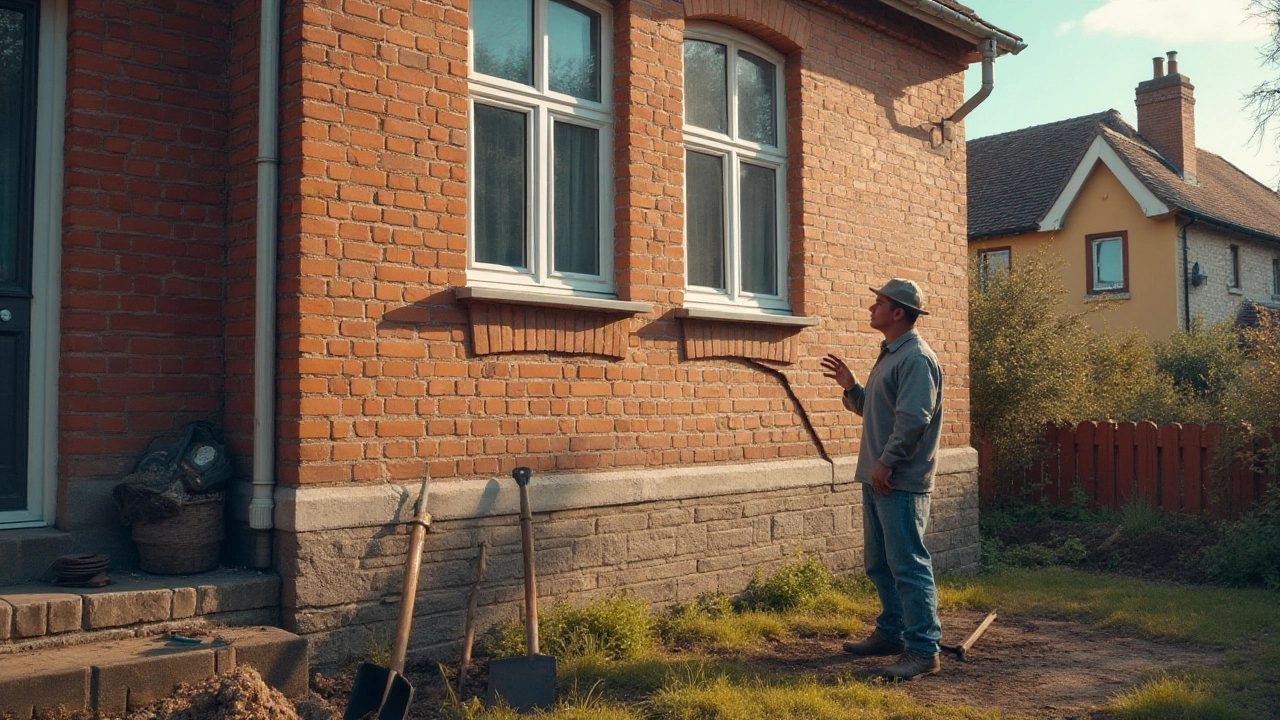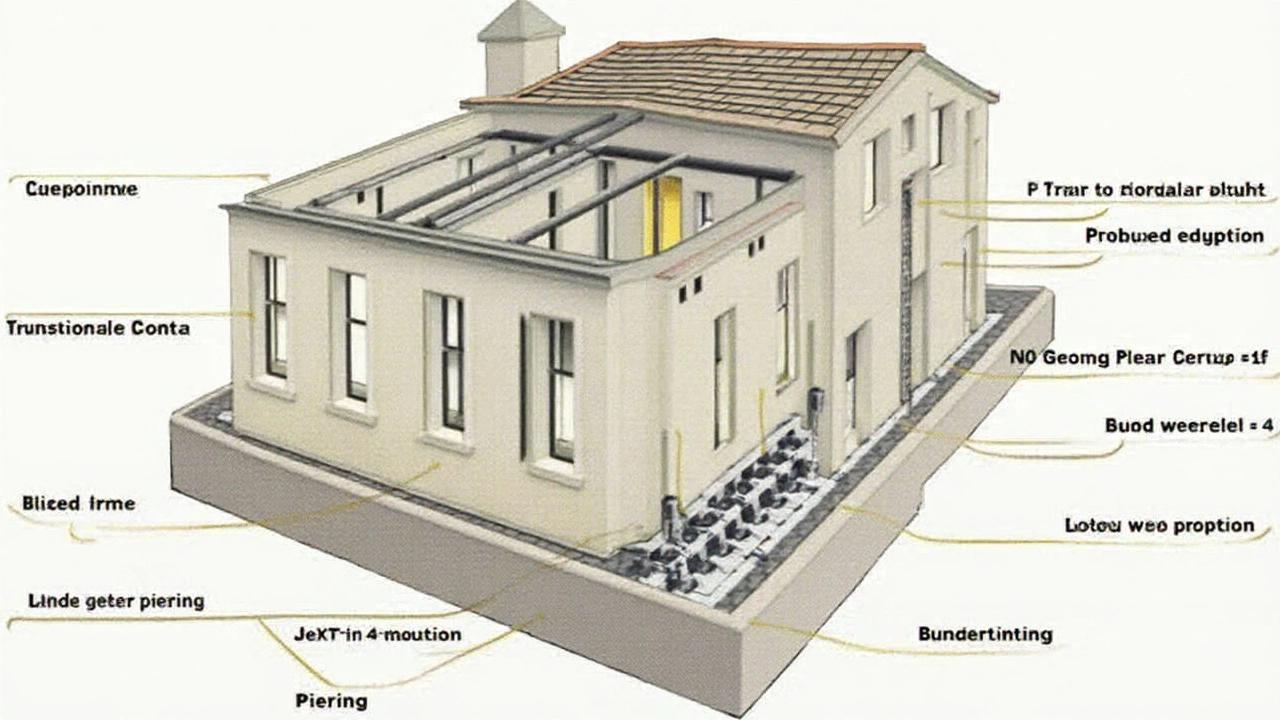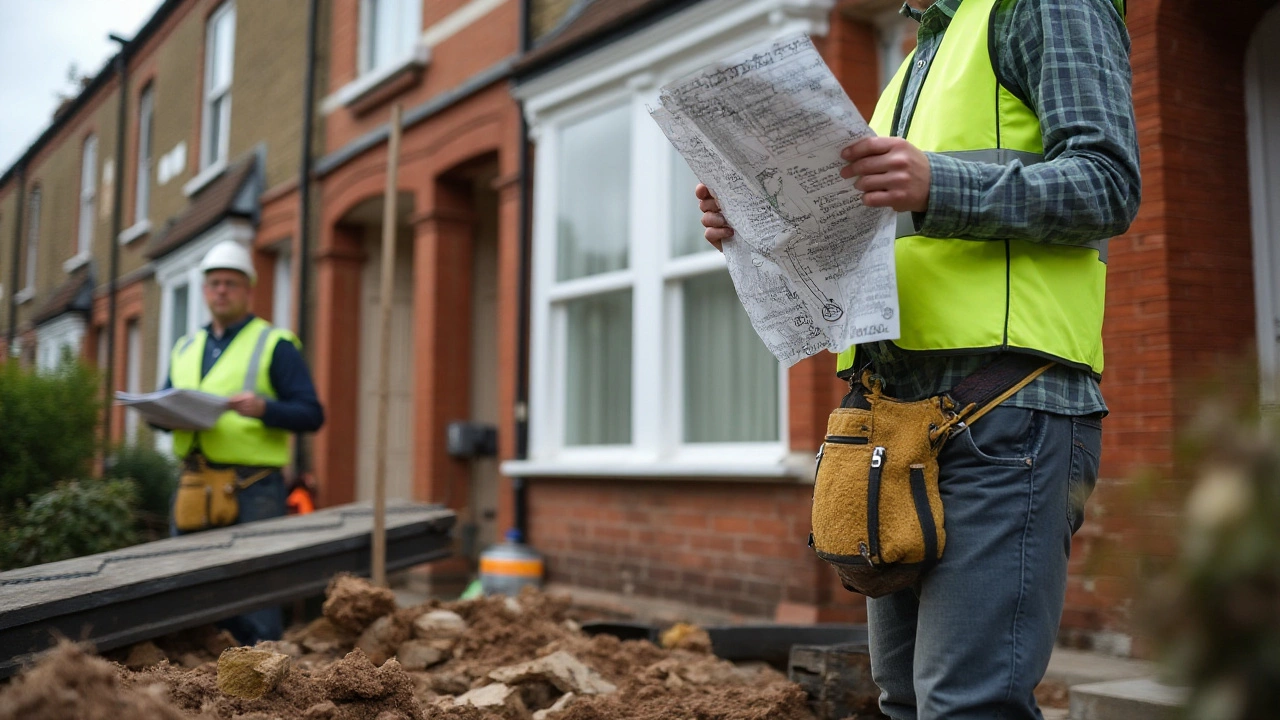Most Expensive Foundation Repair Types and Solutions
 Nov, 14 2024
Nov, 14 2024
Foundation repair is a concern that looms over many homeowners, often due to its potential to drain wallets. Recognizing which repairs have the heftiest price tags can prepare you for what's ahead. Take control of your home's future by learning about the most costly types of foundation repairs and the reasons behind their expense. The goal is to provide you with insights that could potentially save time, money, and stress.
From advanced techniques like piering to the robust process of underpinning, some repairs climb in cost due to their intricacy and the materials involved. These methods, while pricey, often offer the stability and safety required to preserve the home's value and structural integrity. Additionally, understanding these repairs can aid in making informed decisions about maintenance and addressing early signs of foundation issues.
- Introduction to Foundation Repair Costs
- Factors Affecting Repair Costs
- Types of Expensive Foundation Repairs
- Tips for Choosing Repair Solutions
Introduction to Foundation Repair Costs
Foundation repair is akin to the skeleton of a residence, essential for its steadfastness and longevity. However, when structural issues arise, the costs can escalate quickly, causing a financial strain that many homeowners find overwhelming. Understanding what drives these expenses is crucial when delving into the expansive realm of home repair. Different types of damages demand varied solutions, each with its unique price range influenced by several critical factors.
Homeowners often wonder why a foundation repair can cost so much. There are several reasons, ranging from the severity of the damage to the methods employed for fixing the issues. For instance, the process might involve lifting a sinking foundation or filling in cracks, both of which require professional expertise. Highly specialized equipment and materials, such as hydraulic jacks for piering or expansive grout for underpinning, are not only expensive but also crucial for enduring results. According to a report from HomeAdvisor, the average homeowner can expect to shell out anywhere between $2,000 and $7,000, yet costs can soar to $15,000 or more for complex problems.
Cost considerations don't stop at the method of repair; they extend to labor, geography, and even permit requirements. Repairs in urban areas might incur higher costs due to greater regulatory hurdles and demand for qualified professionals. Labor costs differ greatly across states, which can either curtail or amplify the budget, affecting everything from initial assessments to project completion. An essential component is permits, crucial for ensuring all changes adhere to local building codes. These add a layer of administrative fees, impacting the overall expense, but guarantee that safety and legality are not compromised.
Lastly, timing can be a cost-determining factor. Procrastination can serve as the nemesis of affordable repair. Prompt attention to minor issues can prevent them from ballooning into substantial structural threats. Keep an eye on rainy seasons, which can flood basements and worsen cracks, requiring you to act swiftly. Dealing with foundational problems during off-peak seasons when contractors are less busy could also bring down prices. Here, an ounce of preventive care could indeed be worth the proverbial pound of cure, saving homeowners money in the long run. Roger Hawkins, an industry expert, once said, "The key to managing foundation repair costs is diligence – watching for warning signs like interior cracks or doors that won't close, and seeking professional help at the first suspicion of trouble."

Factors Affecting Repair Costs
When it comes to understanding the costs of foundation repair, a multitude of factors interweave to create the final bill. Each home is unique, resulting in a wide spectrum of troubles and corresponding repair solutions. The primary determinants include the type of foundation at play, the severity of existing damage, and the geographical setting. Homes built on slabs often face different complications compared to those with basements or crawl spaces. For example, slab foundations can experience shifting due to soil movement, demanding intricate procedures like piering to stabilize the structure effectively. Contrast this with a basement scenario, where water infiltration might be the core issue, bringing other costs and methods into consideration.
Another significant factor is the extent of the damage. Minor cracks may just need sealing and regular monitoring, whereas more extensive damage could mean a full-scale underpinning job, which escalates costs. Moreover, digging deeper—both literally and financially—may be necessary if a foundation has settled unevenly, requiring extensive digging and foundation reinforcement. The materials required for the repair also play a role. High-quality concrete, steel piers, and epoxy can add to the financial burden, albeit ensuring longevity and safety.
Geographical location also greatly impacts repair costs. Soil conditions vary dramatically across different regions—clay, sand, loam, and rocky soils each bring unique challenges. Homes in clay-rich areas are more likely to experience significant and frequent foundation movement due to the expansive properties of clay upon freezing and thawing. This inevitably leads to pricier preventive measures and repair techniques. Alternatively, houses situated near large bodies of water might encounter water table issues, leading to a different slew of problems and remediation measures.
"The cost to repair a foundation does fluctuate significantly based on the nature of its environment and structural needs," notes John Carter, a seasoned structural engineer who has worked on homes across various terrains.
Lastly, the cost of labor in your locality affects overall pricing. Areas with high costs of living tend to have corresponding high labor rates, which directly translates to more expensive foundation repairs. The choice of repair service can also alter costs. Experienced professionals with solid reputations may charge more but offer assurance with their expertise and quality work. Conversely, opting for a budget repair service might risk low-quality materials and amateurish service, potentially turning a short-term saving into a long-term expense.
Costs Breakdown
To understand the specific elements influencing costs further, consider these potential line items in a repair quote:
- Materials: Concrete, steel, epoxy—each with varying prices and lifespans.
- Labor: Skilled workers could ensure quality but at a premium.
- Permitting: Some repairs require local permits, adding to time and cost.
- Equipment Use: Machinery such as hydraulic lift systems for piering jobs.
Each aspect of these repairs requires careful consideration, as overlooking any aspect could lead to complications down the line. Being aware of every cost contributor can be the difference between a savvy homeowner and one left in financial distress.

Types of Expensive Foundation Repairs
When it comes to addressing serious structural issues, certain types of foundation repair top the list in terms of cost. Homeowners often find themselves facing hefty bills when the problem requires intricate solutions involving specialized labor and materials. The most expensive types of foundation repairs include piering, underpinning, slabjacking, and basement waterproofing, alongside a few other complex procedures. Understanding the intricacies of these repairs can empower homeowners to make informed decisions and potentially anticipate costs.
Piering and Piling
Piering involves driving steel or concrete pilings into the ground beneath a foundation. This method is necessary when a foundation has shifted or settled unevenly. The cost can be substantial, ranging anywhere from $1,000 to $3,000 per pier, depending on soil conditions and depth requirements. This approach is highly effective for stabilizing shifting foundations permanently, but it requires skill and precision, driving up labor costs. Geography really plays a role here, as different soil types affect how deep and how many piers are needed, which in turn affects the price significantly. Engineers often must be consulted to design the proper configuration, adding to the total cost.Underpinning
Underpinning is another significantly costly foundation repair technique, especially when it involves concrete or steel reinforcement. This process strengthens the foundation by extending it to a more stable layer of soil. The cost for underpinning can be exorbitant, weighed heavily by the complexity of the project and local labor charges. Prices may vary widely but can reach tens of thousands of dollars. Underpinning often requires temporary relocation of the household due to the extensive excavation around the home. This can add unintended costs and stress, not to mention the logistical challenges. Nevertheless, these sacrifices often ensure a safer, long-term solution."Investing in such high-cost repairs can feel burdensome, yet they ensure the structural integrity and value of your property for years to come," notes Jane Nichols, a structural engineer with decades of experience in home renovations.
Slabjacking
Slabjacking is commonly used for repairing sunken concrete slabs. This process involves pumping a mixture of cement, sand, and other additives beneath the slab to lift it back into position. While generally less expensive than other methods, in some cases where heavy machinery is required, costs can skyrocket, especially for extensive areas. This method is known for its rapid execution and minimal disruption to the household, which can justify the expense in terms of convenience and time saved. The challenge, however, lies in the necessity for accuracy and the ability of the filler material to stabilize appropriately over time.Basement Waterproofing
Basement waterproofing solves foundational leakage problems and also qualifies as an expensive repair project due to the extent of work required. Depending on the severity of a water issue, methods may include interior and exterior drainage systems, sealers, and sump pump installations, where a complete overhaul can easily incur expenses upwards of $15,000. Aside from providing peace of mind, addressing water issues can prevent mold and structural degradation, making it a worthwhile investment in many cases. The hidden costs of neglect, such as health risks and further property damage, often greatly outweigh the initial financial burden.It’s not just the techniques that determine the price but where the work is done, how extensive the damage is, and the materials needed, all of these factors intertwine to push costs upward. Those who find themselves facing such foundation repair challenges should seek multiple professional estimates, keeping in mind that the quality and reliability of the repairs can significantly affect a home’s future value and safety.

Tips for Choosing Repair Solutions
Choosing the right repair solution for your foundation is crucial to ensuring the longevity and safety of your home. Begin by assessing the extent of damage and specific type of damage to your foundation. This requires a thorough inspection, ideally by a structural engineer or a foundation specialist, to determine whether you are facing issues such as settling, bowing walls, or expansive soil. Understanding the nature of the problem helps you make an informed decision on the remedy that best suits your needs.
Once the type of damage is identified, consider consulting multiple contractors to obtain various perspectives and quotes. Don't jump straight for the cheapest option; instead, weigh their expertise, reputation, and understanding of your specific issue. It's also wise to check reviews or ask for references. A more experienced contractor may propose a solution that, although more expensive initially, could prevent future repairs and save you money in the long run. Be wary of those who suggest one-size-fits-all solutions without a detailed analysis of your property.
Another crucial factor is understanding the materials and techniques involved in the repair process. Some methods, like piering, use high-quality, long-lasting materials designed to stabilize the foundation effectively, which might justify their higher costs. Ensure that the proposed solution is commensurate with the nature of the soil and climate conditions specific to your area's geographical location. Researching basic engineering concepts can give you an edge when discussing your options with professionals.
"A strong foundation requires more than just top-grade materials, it's the combination of technology, expertise, and understanding nature's forces," says John Doe, a well-regarded structural engineer known for his work in sustainable building practices.Maintain an open channel of communication with your contractor about warranty options provided with the repair work. Warranties vary and understanding their specifics can offer peace of mind. Some contractors offer warranties on their work that could last up to a lifetime, indicating their confidence in the quality and durability of their repairs.
Lastly, consider preventative measures and maintenance routines post-repair to extend the life of your foundation. Regularly check for signs of new issues, such as cracks or leaks, and take immediate action before they become serious problems. A house is a living entity, adapting and shifting over time, and requires continuous care and attention. Investing time in maintenance can help you avoid the kind of extensive and costly repairs that we all dread.
